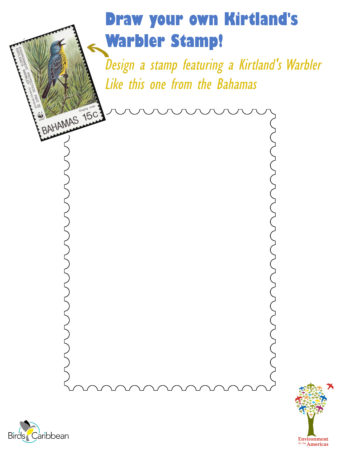Celebrate World Migratory Bird Day (WMBD) with us in our virtual “Birds Connect Our World” edition! Have fun learning about a new migratory bird every day. We have colouring pages, puzzles, activities, and more. Download for free and enjoy nature with your family at home.
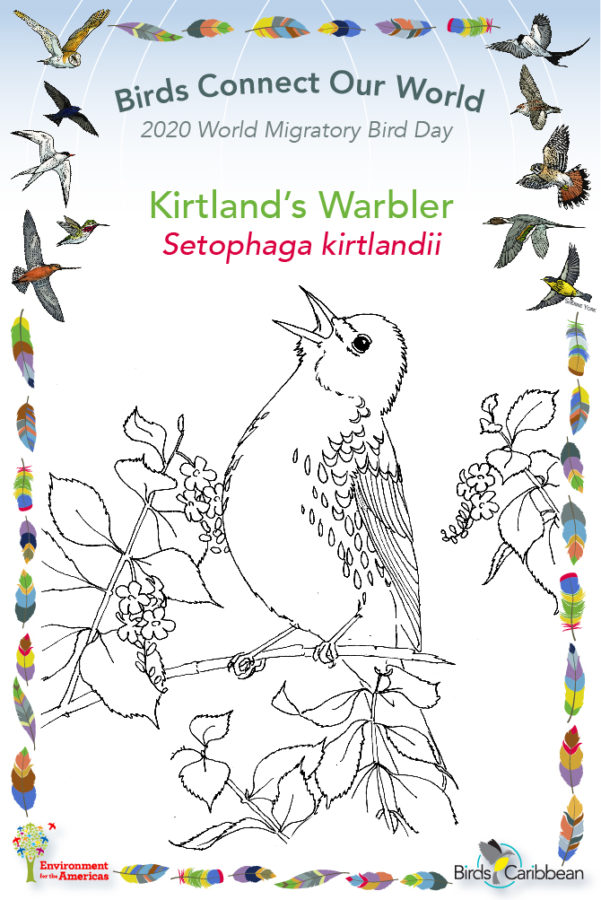
Migratory Bird of the Day: Kirtland’s Warbler
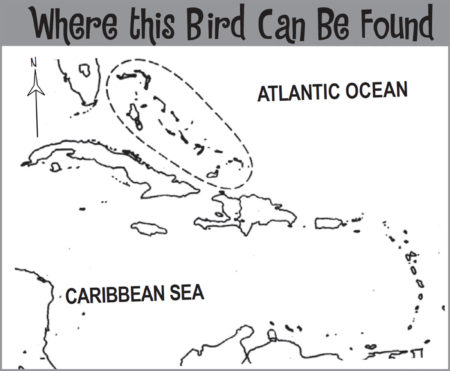
The Kirtland’s Warbler is a very rare warbler that almost became extinct 50 years ago. It is blue-gray above, lemon-yellow below, has black streaks on its sides, and white crescents above and below the eye. Males have black from the base of the bill to the eye. Females are similar but with no black on the face, and less brightly colored than males. Kirtland’s Warblers can be seen ‘pumping’ their tails as they look for food.
Kirtland’s Warblers breed only in a very small area in the US. They nest in Jack Pine forests in Michigan, Wisconsin and lower Ontario. This species winters mainly in the Bahamas, on the islands of Eleuthera, Cat Island, Long Island and San Salvador. Its migration has been tracked using tiny light sensitive tags called geolocators. Learn more here.
The Kirtland’s Warbler feeds on insects and fruit. In the winter, they are microhabitat specialists. They can be found in coppice and scrub habitats with large amounts of Black Torch, Wild Sage and Snowberry shrubs. These are some of their favorite fruits to eat. Kirkland’s Warblers can be hard to spot during the winter, they tend to hide in dense vegetation.
Kirtland’s Warbler was one of the first species to be placed on the North American Endangered Species list. In 1974 there were only 170 pairs. The decline of this bird was caused by loss of breeding habitat and nest parasitism by Brown-headed Cowbirds. Extensive conservation work is ongoing to provide nesting habitat and control cowbird numbers. Thanks to this effort there are now over 2,300 pairs, and in 2019, the species was delisted. Research on Kirkland’s Warbler in The Bahamas has helped boost both local and international conservation. The Kirtland’s Warbler Research and Training Project trained Bahamian students in field research, ecology, and conservation. Many of these students have gone on to become conservationists in The Bahamas. Learn more about this species, including its range, photos, and calls here.
Colour in the Kirtland’s Warbler!
Download the page from Migratory Birds of the West Indies Colouring Book. Use the photos below as your guide, or you can look up pictures of the bird online or in a bird field guide if you have one. Share your coloured-in page with us by posting it online and tagging us @BirdsCaribbean #WMBD2020Carib
Listen to the call of the Kirtland’s Warbler
The calls of the Kirtland’s Warbler are a repeated short “Chip”
Puzzle of the Day
Click on the images below to do the puzzles. You can make the puzzle as easy or as hard as you like – for example, 6, 8, or 12 pieces for young children, all the way up to 1,024 pieces for those that are up for a challenge!
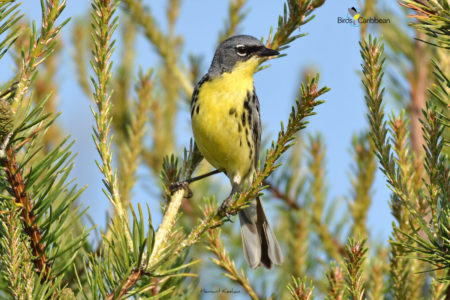
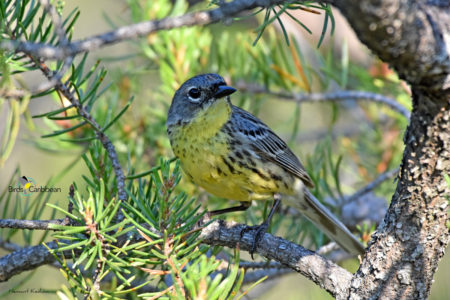
Activity of the Day
FOR KIDS: Use our fun worksheet to create your very own Kirtland’s Warbler stamp. Use the Kirtland’s Warbler stamps from the Bahamas, the colouring page or our photos for your inspiration!
FOR KIDS AND ADULTS:
- Take a walk and see if you can spot a migratory warblers. Unless you are in the Bahamas you might not see a Kirtland’s Warbler but see what other migratory birds you can find. Use a bird field guide or the FREE Merlin bird ID app to help you identify the birds you are seeing.
- Enjoy the video of the handsome male Kirtland’s Warbler. He is in his jack pine habitat on the breeding grounds. In the video you can hear him singing!
- Visit MigratoryBirdDay.org for many more free activities and resources to learn about migratory birds, their threats and conservation actions you can take.

